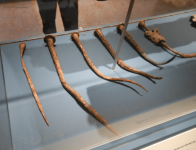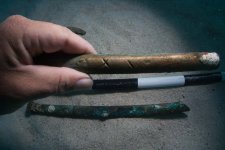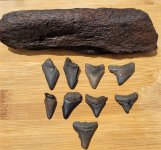ARC
Gold Member
- Aug 19, 2014
- 37,293
- 131,829
- Detector(s) used
- JW 8X-ML X2-VP 585
- Primary Interest:
- All Treasure Hunting
It may have been true for as far as the British Navy's construction... which I know a lot less about beings I have never been curious about British Navy related ships or otherwise for that matter.
But this is not true for Spanish vessel construction.
Empirical fact.
Which begs the question I would like to ask Alex... for I have been under the impression that Alex specialized and was versed in Spanish vessel construction.
Are you not a Spanish vessel archeologist ?
But this is not true for Spanish vessel construction.
Empirical fact.
Which begs the question I would like to ask Alex... for I have been under the impression that Alex specialized and was versed in Spanish vessel construction.
Are you not a Spanish vessel archeologist ?
Last edited:









